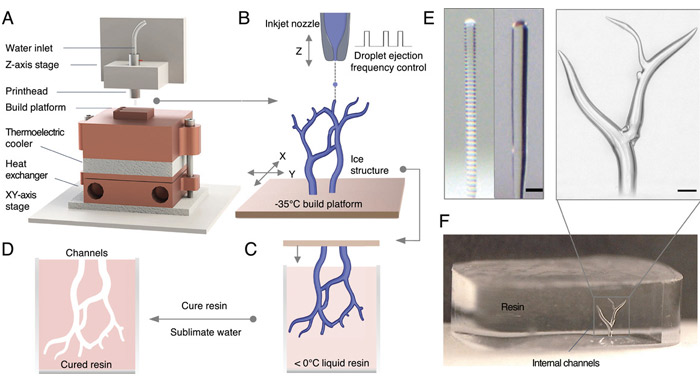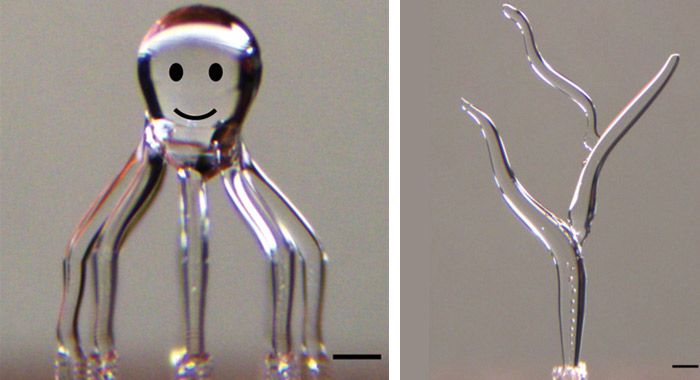
At Carnegie Mellon University, located in Pennsylvania, engineering researchers claim to have succeeded in 3D printing microstructures of ice. They plan to use these structures as sacrificial templates, allowing them to create internal channels or conduits with the highest finesse and precision. With this ice 3D printing process, the researchers hope to develop useful applications for biomedical engineering, advanced manufacturing and art.
While we usually cover advances in the field of thermoplastics or metals, it is more rare to find innovations using water as a printing material! It was chosen by these researchers thanks to its biocompatibility and its ability to transform quickly and easily into ice. Of course, the downside to the using ice was that the team understandably faced many challenges in defining the 3D printing parameters.

The developed manufacturing method (photo credits: Carnegie Mellon University)
The Ice 3D Printing Process
Akash Garg, a PhD student in mechanical engineering, and Saigopalakrishna Yerneni, a postdoctoral associate in chemical engineering, developed the ice 3D printing process. Specifically, they deposited water droplets on a cold build platform that was maintained at -35°C, allowing the water to be turned into ice extremely quickly. It took multiple iterations before they found the right printing trajectory, the speed of the nozzle movement and the droplet deposition frequency to be able to create smooth structures with well-defined geometries. All while providing a reproducible pattern. Thanks to the rapid phase change of water and the resistance of ice, the researchers were able to imagine all kinds of shapes without the need for supports.
After several tests, the team was able to create several shapes on a microscopic scale including a tree, a propeller and an octopus. Akash Grag explains: “Using our 3D ice process, we can fabricate microscale ice templates with smooth walls and branched structures with smooth transitions. These can subsequently be used to fabricate microscale parts with well-defined internal voids.”

Examples of 3D printed structures (photo credits: Carnegie Mellon University)
These ice structures therefore have been designed to serve as sacrificial templates for designing more complex final parts. The researchers call this “inside out” printing or reverse molding. Specifically, once completed, the structures can be bathed in a liquid or gel of a chilled structural material such as resin. Once this has hardened, the water can be easily removed from the part, either by melting the ice or by turning it into water vapor. This second method offers easy removal after molding, resulting in smooth and accurate internal channels.
The team concludes, “We believe this approach has enormous potential to revolutionize tissue engineering and other fields, where miniature structures with complex channels are demanded, such as for microfluidics and soft-robotics.” You can find more information about this ice 3D printing process HERE.
*Cover Photo Credits: Prime Time PBC



